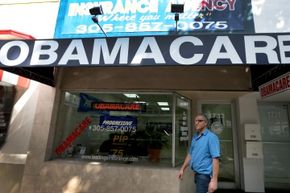The Patient Protection and Affordable Care Act made sweeping changes to the U.S. health care system. Signed into law in 2010, its intent is to increase the number of insured people in the country by making health insurance more accessible and less expensive while reducing overall health care costs. This complex legislation affects almost every aspect of health care in the U.S., but when we break it down and look at the provisions that make up the law, we can see how they fit together and function.
One of the goals of the Affordable Care Act is to prevent insurance companies from denying people coverage for pre-existing medical conditions, including the following:
Advertisement
- Congenital diseases like asthma and some forms of diabetes
- Illnesses such as emphysema contracted during an uninsured period
- Injuries, like a back injury or a torn knee ligament, suffered during an uninsured period
That goal is a big deal because such denials traditionally have burdened uninsured people who'd lost a job or had other financial problems. Medical problems that occurred during an uninsured period could leave them with crushing medical bills for the rest of their lives.
But the reason you're reading this article is to find out about hardship exemption, or the provision under the Affordable Care Act that lets people who were unable to obtain health insurance avoid the individual shared responsibility payment they would otherwise be required to submit with their tax return. Without the exemption, individuals and families whose lives were disrupted or who had suffered serious financial hardship would have another penalty piled onto their troubles because they didn't maintain minimal health care coverage.
In this article, we'll learn not only about the hardship exemption, but also about the health care legislation and why it requires the shared responsibility payment in the first place.
Advertisement



